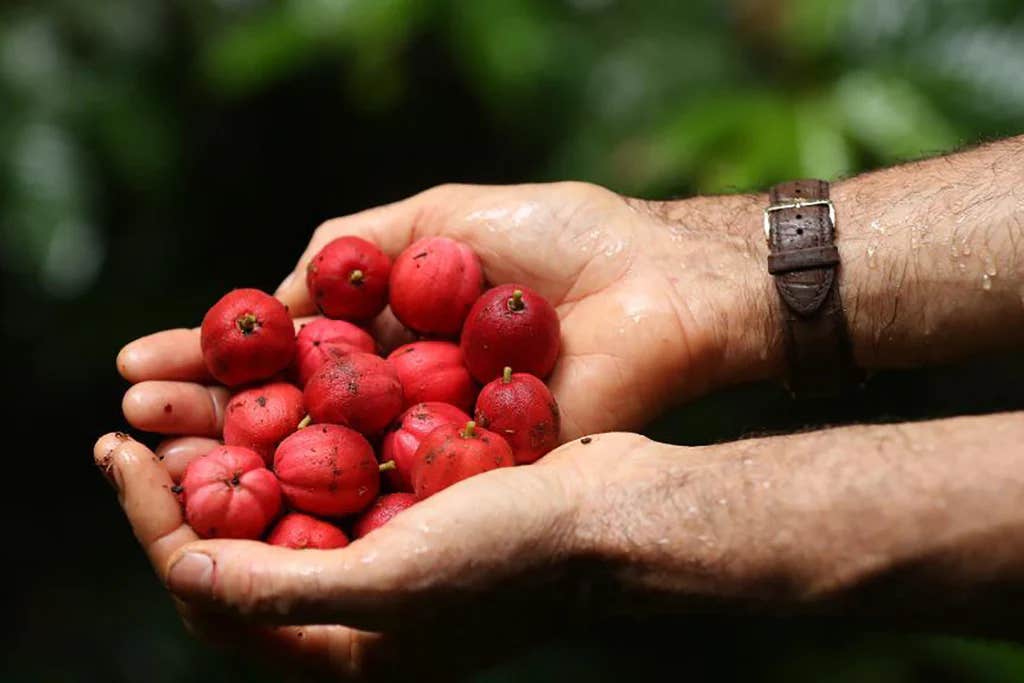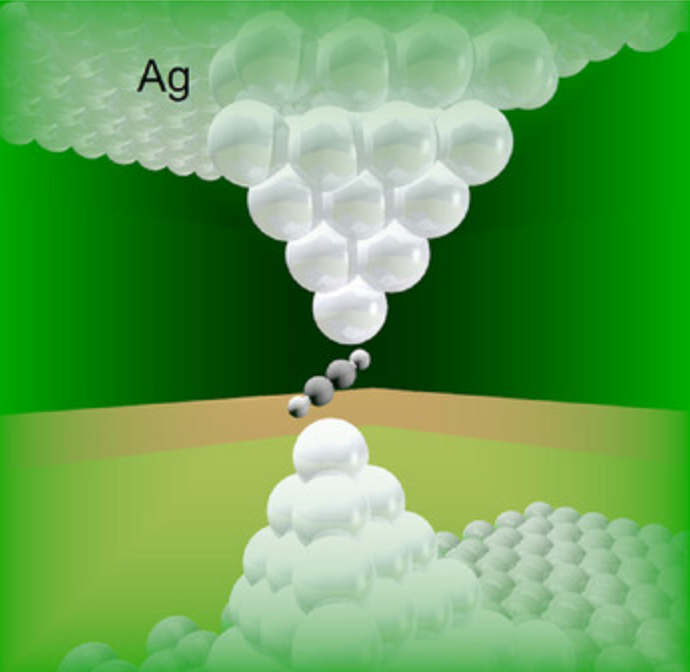Lifechanging cancer drug produced from plant found only in rainforests
In nature, the compound EBC-46, also known as tigilanol tiglate, appears in the seeds of the pink fruit of the blushwood tree.

In nature, the compound EBC-46, also known as tigilanol tiglate appears in the seeds of the pink fruit of the blushwood tree, Fontainea picrosperma. (CREDIT: Creative Commons)
Researchers at Stanford University have found a fast and reliable way to make a powerful substance that fights cancer in the lab. This substance, called EBC-46, has been hard to get because it only comes from one plant found in a small part of the rainforest in Northeastern Australia.
EBC-46, also known as tigilanol tiglate, works by helping the body's immune system attack tumors in one spot. This causes the blood vessels in the tumor to break, which ultimately kills the cancer cells. Because it was so successful in treating cancer in dogs, EBC-46 is now being tested on people in clinical trials.
EBC-46, a complicated substance, was hard to make in a lab because its structure was tough to replicate. But, clever scientists from Stanford figured out a way to change a common plant material into EBC-46 for the first time.
PhD students Edward Njoo, David Fanelli, Zach Gentry, and Owen McAteer. These researchers achieved the synthesis of the cancer-fighting compound EBC-46. (CREDIT: Paul Wender)
The cool thing is, this method doesn't just make EBC-46. It can also make similar substances called "analogs." These analogs might work even better and could help treat a bunch of serious diseases like AIDS, multiple sclerosis, and Alzheimer’s. These diseases all have something in common: they involve a key enzyme called protein kinase C, or PKC, which EBC-46 targets.
“We are very excited to report the first scalable synthesis of EBC-46,” said Paul Wender, the Francis W. Bergstrom Professor in the School of Humanities and Sciences, professor of chemistry and, by courtesy, of chemical and systems biology at Stanford, and corresponding author of a study describing the results in the journal Nature Chemistry. “Being able to make EBC-46 in the lab really opens up tremendous research and clinical opportunities.”
Co-authors of the study are Zachary Gentry, David Fanelli, Owen McAteer, and Edward Njoo, all of whom are PhD students in Wender’s lab, along with former member Quang Luu-Nguyen.
Related Stories
The research team was really happy when they finally figured out how to make EBC-46. Wender said that if you had visited the lab right after they succeeded, you would've seen everyone smiling a lot. They did something that many people thought couldn't be done.
Tigilanol tiglate was first discovered in a faraway place through a special process by a company called QBiotics in Australia. It comes from the seeds of a pink fruit that grows on the blushwood tree. Animals like musky rat-kangaroos avoid eating these seeds because they make them throw up and have diarrhea.
When you inject a small amount of EBC-46 directly into some solid tumors, it changes how the cells communicate. EBC-46 seems to activate certain types of proteins in the cells, which then affect how other proteins work. This process attracts the body's immune system to fight against the cancer cells.
Paul Wender, the Francis W. Bergstrom Professor in the School of Humanities and Sciences, professor of chemistry. (CREDIT: Paul Wender)
This fight causes inflammation, which makes the blood vessels around the tumor leaky. This leaking causes the tumor to stop growing and eventually die. For skin cancers, the tumors dry up and fall off. Researchers are also looking into how to deliver EBC-46 to tumors inside the body.
In 2020, the European Medicines Agency and the Food and Drug Administration in the United States approved a new medicine called Stelfonta to treat a common type of cancer in dogs called mast cell cancer. This medicine is made from a substance called EBC-46.
A study found that after one injection of Stelfonta, 75% of dogs with mast cell cancer were cured, and after a second injection, 88% were cured. Now, scientists are testing this medicine in people with skin, head and neck, and soft tissue cancers.
Because the source of the medicine comes from a specific type of tree called the blushwood tree, which grows in limited areas, scientists are thinking about growing these trees on special farms. But there are many problems and challenges with doing this.
To start, trees need to be pollinated by the right kind of animals. This means having the right insects or birds around. It's also important to plant the trees at the right distances from each other so they can help each other with pollination. Weather changes and diseases can also affect the trees. Finding space to grow blushwood trees can be difficult because it takes up a lot of land.
Wender explained that to make enough EBC-46 reliably and sustainably, we should make it artificially instead of getting it from plants.
Wender and his team found that a good way to start making EBC-46 is by using a compound called phorbol, which comes from plants. There are many plants all over the world that produce phorbol, and the seeds of these plants are not expensive to buy. They chose a plant called Croton tiglium, also known as purging croton, which is often used in traditional Chinese medicine.
First, let's talk about making EBC-46. It starts with getting some seeds, similar to how you might buy coffee beans. Then, you grind up these seeds and use a hot liquid to get out the important stuff called the active ingredient, which is a kind of oil that has something called phorbol in it.
Next, the scientists had to solve a big problem. They needed to add specific oxygen atoms to a part of the molecule called the B ring. This was really tough, but it's necessary for EBC-46 to work with something called PKC and change how cells behave.
To help them with their research, the scientists used fancy machines and computers at places like the Stanford Neuroscience Microscopy Service, the Stanford Cancer Institute Proteomics/Mass Spectrometry Shared Resource, and the Stanford Sherlock cluster. These tools helped them see what was happening on a tiny level and model how the molecule behaves.
With the help of instructions, the team managed to add more oxygen atoms to a part of a substance called phorbol. They did this by using a special method called an "ene" reaction, which happens when certain substances mix together as they flow through tubes. After that, the team carefully added other groups to this part of the substance, making sure they were in the right places. It took them only four to six steps to make substances similar to EBC-46, and about twelve steps to make EBC-46 itself.
Tigilanol tiglate is a natural product diterpenoid in clinical trials for the treatment of a broad range of cancers. (CREDIT: Stanford University)
Wender hopes that the far broader availability of EBC-46 and its PKC-influencing cousin compounds afforded by this breakthrough approach will accelerate research into potentially revolutionary new treatments.
“As we learn more and more about how cells function, we’re learning more about how we can control that functionality,” said Wender. “That control of functionality is particularly important in dealing with cells that go rogue in diseases ranging from cancer to Alzheimer’s.”
Wender is also a member of Stanford Bio-X and the Stanford Cancer Institute, and a fellow of Sarafan ChEM-H.
Note: Materials provided above by Stanford University. Content may be edited for style and length.
Like these kind of feel good stories? Get the Brighter Side of News' newsletter.



